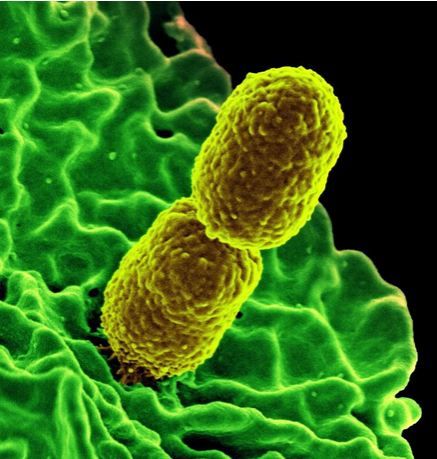Biomarker Added to PSI Helps Risk-Stratify Patients With CAP
The combined measures may help reduce hospitalizations by reclassifying CAP patients at low risk for adverse events.
Klebsiella pneumoniae. Courtesy of National Institute of Allergy and Infectious Disease

The addition of midregional proadrenomedullin (MR-proADM) as a prognostic biomarker added some clinical utility to the Pneumonia Severity Index (PSI), making the combined model useful in risk-stratifying patients with community-acquired pneumonia (CAP), according to the results of a study published recently in PLoS One.
“As compared with PSI alone, MR-proADM in combination with PSI may be helpful in individual risk stratification for short-term poor outcome of CAP patients, allowing a better reclassification of patients,” wrote study author Susana Gordo-RemartÃnez, of the Hospital General Universitario, Madrid, Spain, and colleagues. “Although MR-proADM is a good predictor of mid-term mortality, similar to PSI, the combined model does not improve the predictive ability, and does not allow a more accurate reclassification of patients according to their mortality risk.”
Previous research has shown that MR-proADM, a peptide with vasodilatory, antimicrobial, and anti-inflammatory properties, is associated with mortality in patients with CAP. With this analysis, Gordo-RemartÃnez and colleagues sought to determine whether combined use of MR-proADM and the PSI improved the prognostic value of the PSI alone.
Their study included 226 consecutive patients with CAP. The researchers analyzed the ability of MR-proADM plus PSI to predict poor outcome-using receiver operating characteristic curves, logistic regression, and risk reclassification-compared with PSI alone. The primary outcome measure was “poor outcome,” which the researchers defined as the incidence of an adverse event.
Overall, 14.6% of patients reached the primary outcome, experiencing an adverse event. The area under curve was higher for PSI (AUC = 0.74 [0.64-0.85]) compared with MR-proADM (AUC = 0.72 [0.63-0.81]), but not significantly higher.
Combined use of the PSI and MR-proADM did not result in a significantly improved area under curve compared with PSI alone (AUC = 0.75 [0.65-0.85]; P=.56).
Use of the combined model did result in the correct reclassification of 10 patients versus classification with PSI alone. However, combined use failed to significantly improve classification of patients to predict mid-term risk mortality.
According to the researchers, net reclassification improvement index was statistically significant with an improvement percentage of 3.03% for adverse events and 4.66% for no adverse event.
“The combined method of PSI plus MR-proADM increases the number of patients without complications that are classified as ‘low risk,’” the researchers wrote. “This can be useful in the clinical practice to decrease the number of unnecessary hospitalizations, avoiding nosocomial infections, and reducing health costs.”
References:
Gordo-RemartÃnez S, Calderón-Moreno M, Fernández-Herranz J, et al. Usefulness of midregional proadrenomedullin to predict poor outcome in patients with community-acquired pneumonia. PLoS One. 2015;10:e0125212.